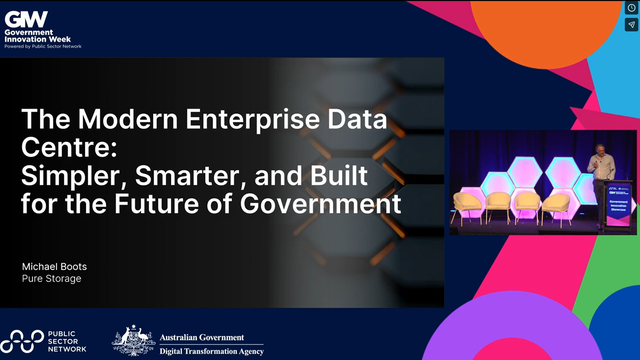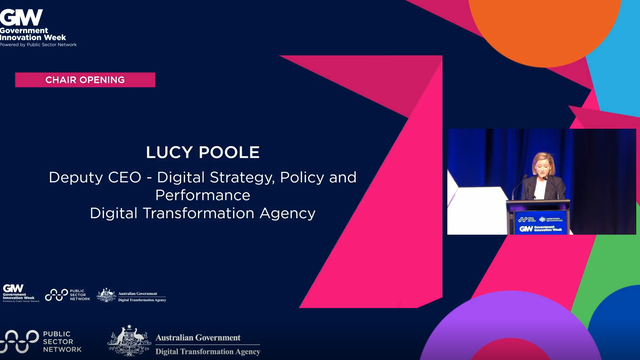5 Key Takeaways from the Health and Human Services National Insights Series
The global pandemic has been a health crisis to be sure, but it has also presented an opportunity for the healthcare industry, one that may not come around again. Though initially healthcare professionals – like almost everyone else – responded to the pandemic in a somewhat chaotic manner, eventually they found their stride, and with technology and great advances in medicines and the development of vaccinations, were able to care for their patients in a more informed way. This patient-centric care model that is underpinned by data and is values-driven is what is now expected across the healthcare sector. Data and technology are now at the core of the sector, with patient expectations higher than ever.
These and numerous other issues came out of PSN’s ‘Health & Human Services National Insights Series’, and the following are five of the key take-outs from that event, though of course many of them are inter-connected and inter-related:
1. The post-pandemic recovery
The COVID-19 pandemic forced many hospitals and healthcare institutions to re-work some of their methodologies, especially around how they provide care. As a result of this, A/Professor Marc Budge, who is the Clinical Director of Integrated Care Service at Bendigo Health, and also a Visiting Fellow at the Centre for Digital Transformation of Health at Melbourne University, asks “how are we evolving our patient-led infrastructure?” In other words, “COVID-19 has helped us to accelerate the prospect of virtual care and digitally-enabled technology, but has it left us with the best design foundations when we had an urgent need to evolve?” The reason for this question is that more than ever, with multiple levels of funding and bureaucracy, the health system in Australia “is a very complex environment.” In other spheres of life, people are used to “online banking or the simplicity of online hotel bookings,” but in terms of healthcare, “we haven’t made it that easy for them. We’ve made a very complex system hard to navigate.” On top of that, it is centred on treatment, “often hospital based.” The concept of “hospitals without walls” has been bandied about for “30 or 40 years, but we haven’t quite got there yet.” The pandemic has shone a light on the need to “shift the balance of care.”
Kate Renzenbrink, the Chief Nursing and Midwifery Information Officer at Western Health agrees, and says that “our biggest challenges existed pre-COVID and have been exacerbated or exposed by the pandemic.” In fact, “we’ve got so many areas now that need attention and transformation.” This is both in general and in terms of Western Health, which is “a very big organisation, with close to 10,000 staff.” It has multiple hospitals “including a new Footscray hospital,” and covers an area of western Melbourne that has a population of over 900,000 and unprecedented growth. As such, in this new era, “there is a lot of opportunity for us.”
Not only is it an opportunity, but Marc Budge says that making things easier is now “what individuals and the community actually want and demand of us, especially in this post-COVID era, with all the changes that they’ve been observing.” The challenge for anyone working in healthcare is “how do we take those utilities forward to build solid enterprise platforms with agile capabilities for well-considered evolution and growth.”
2. The future of virtual care
One way to do so is through virtual care, or technology-enabled healthcare. Kate Renzenbrink says that it is “essential that we have the skills to use data to translate it into information and then knowledge and technology.” In fact, in terms of the need to “deliver healthcare in a digital world, one day digital health won’t be mentioned as a separate enterprise.” The problem for now however is that “we have varying levels of digital literacy and access to digital technologies, and for the moment we have to work this way.”
Marc Budge agrees and says that “pretty soon there will come a time when we don’t call digital modalities virtual care. It will just be the delivery of healthcare.” Currently, health and wellbeing services are delivered either “face-to-face or virtually.” Though they are not yet fully integrated, they are one and the same and “virtual care shouldn’t be a separate component and something with its own set of strategies.” In fact, the ideal is that there is a “combination of delivering care with digital technology enablement. That’s what we need to focus upon.”
3. The data challenge
To truly become virtual, the healthcare industry needs to embrace the data opportunity. The problem however is that there have been a lot of challenges along the way. Dr Christopher Oldmeadow, the Associate Director of Clinical Research Design and Statistical Services at Hunter Medical Research Institute (HMRI), which is in partnership with the John Hunter hospital and the University of Newcastle, says that they have begun the process of “liberating the data, but there’s a lot of silos.”
“Everyone knows and understands their particular data assets, but there’s no-one who really has a broader picture of what’s going on collectively throughout the health district and what datasets are available and how they all interact.”
Dr Christopher Oldmeadow, Associate Director, Clinical Research Design and Statistical Services,
Hunter Medical Research Institute
This is largely because in the 1970s, John Hunter hospital was a pioneer of working with data, “but their databases haven’t evolved since then, making them quite archaic and very not practical.” For anyone who wants to extract data for research or even for patient care, it is a long and laborious prospect. As such, through a grant, they have been able to begin a digitisation project. “The aim of this initiative is to liberate all those datasets and enable clinicians to make well informed decisions about a patient’s diagnosis and care.” This involves “meeting with clinicians” to understand their needs, and working with the “over 115 datasets that have been identified.” Yet despite all this, “we find there is still a silo mentality where people are doing their own research without really understanding the resources that are available or the appropriate datasets that are available to answer their questions.” This is part of what the new initiative is trying to combat.
Marc Budge says that one of the reasons why many hospitals have data issues is because of the “hospital dominance in terms of how we store data related to healthcare.” This is an issue that needs to be thought about in a different way to ensure better “data access and a better user experience.” Kate Renzenbrink simply says that “we need to make data meaningful.” Nothing will ever be perfect, and in fact sometimes things “function best when they are at the edge of chaos,” but “we need to tolerate our messy problems and look at how we can best use data to drive change.”
4. New ways of working
In fact, using data differently is one way of evolving the entire medical profession. Christopher Oldmeadow says that their system used to be so “archaic that it really limited what could be done in terms of patient data to help inform their care.” To use the pathology database as an example, until very recently, “a poor clinical research fellow or junior medical officer would have to enter the data in, patient by patient with ethics approval of course, and this would be very time consuming and limiting to what you can actually do with it.” The point of their new initiative therefore is to “modernise that database system through intercepting pathology requests through the system, and then we’ve got a growing prospective cohort of all the pathology rules for reporting and research.”
Not only does this modernisation ensure that each patient can be treated in a manner that is appropriate for them, and that any research can be undertaken in a more effective way, but it also largely eliminates the “problem of unnecessary test ordering, which creates a huge burden on patients.” For instance, over a two year period, they looked at “a dataset of 98,000 patients.” Within a specified timeframe, “what we found was that if a test is normal on one occasion, it’s very likely to be normal and on the subsequent test, and the likelihood of an abnormal result is consistently less than 5%.” Sure, sometimes extra tests are required and there is always “a risk of missing important things that might pop up,” but in general, this knowledge has been a “huge cost savings on the system, as well as the obvious benefits to the patients.”
Kate Renzenbrink says that for the most part, “health organisations are a bit like machines, but they need to become more living, breathing organisms.” What that means is that in a limited but constructive way, “we need to encourage new ideas and disagreements, but that starts with listening to both our staff and our community.” At the moment, nurses in particular “are not working to our full scope.” In fact, a recent survey of nurses found that “39% of respondents reported that they were not using their full knowledge and skills.” Nurses are an integral part of a hospital with specialised skills, and these need to be used in new and different ways to ensure the best in patient care.
“If we want an integrated, efficient, accessible healthcare system, then we need the system to support and value what we do.”
Kate Renzenbrink, Chief Nursing and Midwifery Information Officer,
Western Health
To get the most out of nursing, and in fact out of all health professionals, there needs to be an “advancement of knowledge and skills, an expansion of support for health promotion, and importantly, we need communities to be running their own health.” This means that “consumer expectations now dictate that people want to know about and be in control of their own health records and treatments.”
5. A citizen-centric approach
The current consumer expectations lead Marc Budge to say that the medical profession hasn’t quite been focussing on the right things. Whilst clinical care is clearly important, a study from Scotland found that it only makes up “about 20% of what determines the end outcome in terms of individuals.” The rest is made up of environmental, social and behavioural factors. For doctors who are supposed to use all the data at their disposal “to inform our clinical care,” the same study found that a little over 17% of personal data or individual behaviour is being considered. That means that “we are losing the richness and the context of the rest of that data to try and get better outcomes for people. We need to do better.” Not only do doctors need to do better, but the community expects it, especially post-pandemic. “People have greater expectations of us now in terms of what we do for them with their health and wellbeing, both in the hospitals and at home” using telehealth or virtual care.
To really use that personal data, “citizens want to be the curators of their own health data.” In other words, "we need to move to a patient-centric system.” Patients want to “tell their story once” and then feel confident that the clinicians have listened and have taken into account all the relevant details, including all of their personal circumstances. They want a “user-centred design.”
“For the last 20 or 30 years in health, we’ve put them in the car, but not in the driving seat. I’d much rather see those that can to take the driver’s wheel, so that they can have more control over their data and decision-making in terms of their personal healthcare.”
A/Professor Marc Budge, Clinical Director, Integrated Care Service,
Bendigo Health
Obviously that can be fraught and not everyone needs to be the driver, but it should be an option for those who want it. Kate Renzenbrink says that “personalised medicine is really where we need to go in healthcare. But at the same time, we need our systems to be able to manage this at an individual level, rather than a one-size- fits-all approach.” In other words, tailoring it to their needs so that only those who want get to be in the driver’s seat.



































